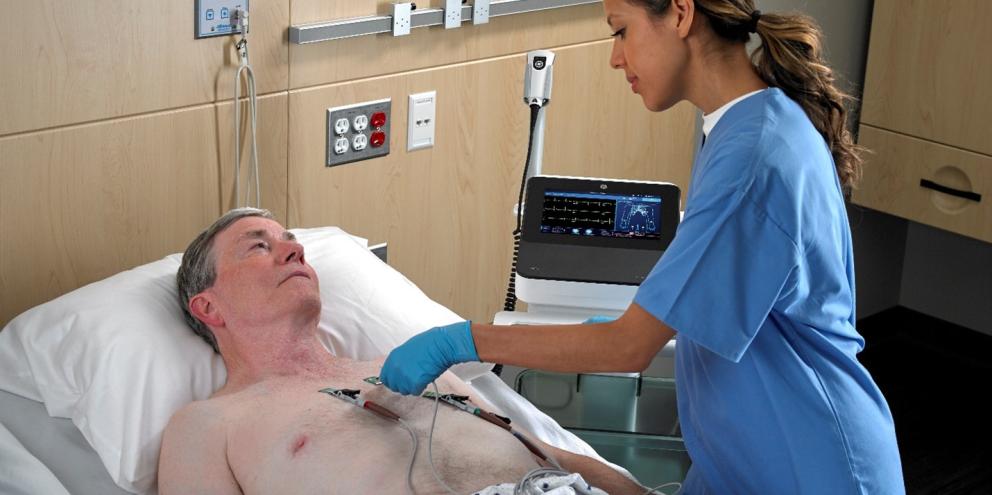
By Tayla Holman
Cardiology devices help cast light on the issue. This highly specialized field includes just over 33,000 practitioners in the United States.1 To care for patients, they rely on diagnostic devices that include electrocardiograms (ECGs).
If ECG accessories such as leadwires and cables do not function properly, these essential devices may fail to accurately measure the heart's electrical activity. This in turn heightens the risk of misdiagnosis, possibly leading to adverse health outcomes. In other words, quality ECG devices combined with quality accessories are essential to excellence in care.
OEM versus generic: Choosing the right accessories
In purchasing ECGs and the accessories they require, materials managers have two basic options:
- OEM devices and OEM accessories. These are often bundled for sale by the device manufacturer.2
- OEM devices and typically lower-priced generic accessories.
The risk of a performance gap can make the choice of accessories more complex than comparing process. When deliberating, here are some key points to consider.
OEM accessories: Buying with confidence
OEM accessories are often produced by the same company that made the device they plug into. They are made with materials similar to those in the base product, adhere to analogous specifications, and undergo rigorous quality testing. Often, the manufacturer tests the devices and accessories as a single unit. Pairing OEM accessories with a fully compatible device can help optimize performance and extend machine life. As a result, while OEM accessories generally carry higher prices, they bring high assurance of reliable performance, backed by the manufacturer's warranty.
Generic accessories: Knowing the differences
Also called "aftermarket" or "third-party" products, generic accessories might not carry a trademark or brand name. Made to act as replacements for OEM items, they don’t have to meet the device maker’s standards and specifications. And in some cases they cannot – because the third party producer lacks access to proprietary information held by the OEM.
Furthermore, generic accessories are tested not as part of a unified system but in isolation. And they are not bound by the same regulatory testing and pathways3 that the FDA demands of OEM products. In the end, questions remain about the rigor with which generic items are tested, and about their device compatibility, accuracy, quality, safety, and reliability.
GE HealthCare ECG cables and leadwires: Key points to consider
To make sure ECG devices are fully functional and reliable for patient care and safety, it is critical for cables and leadwires to be fully compatible with the base unit. To that end, GE HealthCare cables and leadwires are tested in tandem with GE HealthCare diagnostic cardiology and monitoring devices to ensure that they provide the reliable information about critical heart functions on which informed diagnoses depend. In addition, these items undergo strict testing for quality, reliability, and safety, in compliance with American Heart Association standards4 and the guidelines of the International Electrotechnical Commission.5
These GE HealthCare products also deliver features that help enable top-flight performance. For example, the shielding on GE HealthCare ECG leadwires helps reduce triboelectric noise. This arises when friction generates an electrical charge between dissimilar materials that rub together. This form of noise can indicate that patients are in tachycardia, when in reality they are not. Value-added features like shielding make clinicians’ work easier while helping to prevent incorrect assessments and giving peace of mind to patients and caregivers alike.
OEM products: Understanding the value
OEM accessories represent an investment in protecting patients’ health and keeping medical devices in the best possible working condition. Generic ECG leadwires may not be the bargain their lower cost seems to indicate. If they fail to perform optimally, patients ultimately pay the price—in unnecessary or insufficient treatment, in lost time and money on unneeded appointments, or in other even more significant ways.
Quality accessories promote quality care. Pairing OEM cables and leadwires with a host ECG unit shows that clinicians place high priority on acquiring the most accurate and reliable readings – and achieving the best possible outcomes for their patients.
References
- https://www.statista.com/statistics/209424/us-number-of-active-physicians-by-specialty-area/
- https://www.gehealthcare.com/products/diagnostic-ecg
- https://www.advamed.org/wp-content/uploads/2020/09/how-oems-meet-highest-standards-for-servicing-medical-devices.pdf
- https://www.gehealthcare.com/-/media/8980ee88ef8042d88cd6a2dcb11508dd.pdf?la=en&hash=FD37D2F6B156F6A3F320B3D3852C2D738773E921
- https://www.gehealthcare.co.uk/-/jssmedia/global/uk/accessories/clinical-accessories/files/dcar-cables--leadwires-iec-spec-sheet.pdf








